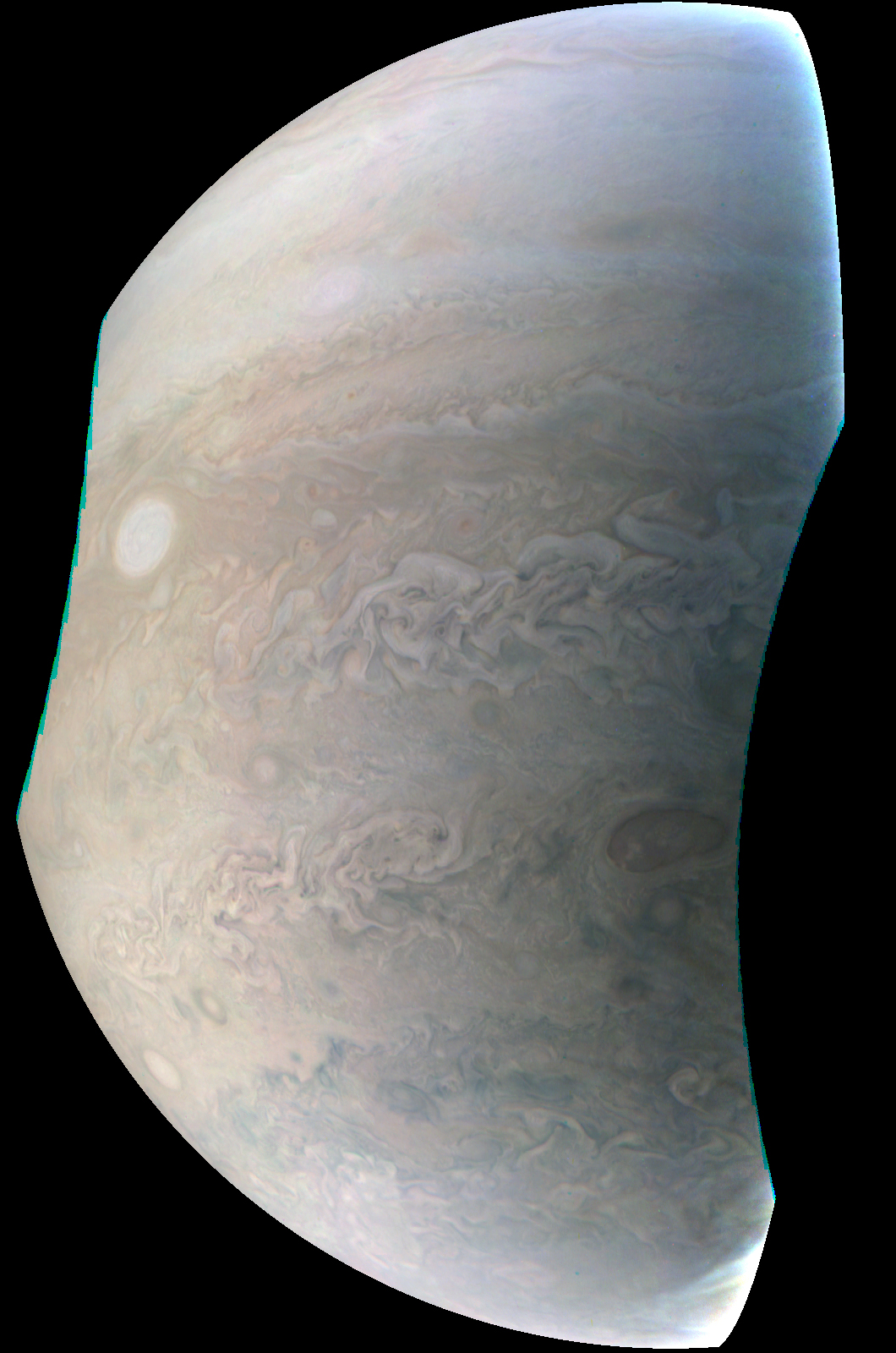Cosmic Bling: Jupiter Sports Stormy 'Pearl' in New Juno Photo

Saturn's rings may be the jewels of the solar system, but Jupiter wears "pearls," and a NASA spacecraft has the picture to prove it.
NASA's Juno spacecraft, which made its third close flyby of Jupiter on Sunday (Dec. 11), snapped this photo of the seventh of eight features that make up a so-called "string of pearls" on the gas giant. The jewels are actually colossal storms. The "pearl" appears as a giant white oval at the left of the image taken by Juno.
The "pearls" of Jupiter are " massive, counterclockwise-rotating storms that appear as white ovals in the gas giant's southern hemisphere," NASA officials wrote in an image description. [See more of Juno's awesome Jupiter photos]
"Since 1986, these white ovals have varied in number from six to nine," NASA officials wrote in the same description. "There are currently eight white ovals visible."
Juno took this photo on Sunday at 9:27 a.m. PST (12:27 p.m. EST/1727 GMT) while buzzing past Jupiter at a range of about 15,300 miles (24,600 kilometers). The probe snapped the image using JunoCam, a visible-light color camera designed to photograph Jupiter's poles and cloud tops.
"As Juno's eyes, it will provide a wide view, helping to provide context for the spacecraft's other instruments," NASA officials wrote. "JunoCam was included on the spacecraft specifically for purposes of public engagement; although its images will be helpful to the science team, it is not considered one of the mission's science instruments."
You can check out more JunoCam photos of Jupiter processed by the public here.
Breaking space news, the latest updates on rocket launches, skywatching events and more!
Juno's Jupiter flyby on Sunday was the third for the spacecraft since it arrived at the planet on July 4 and entered a 53-day orbit. At its closest point, Juno flew within 2,580 miles (4,150 km) of Jupiter's cloud tops at a mind-boggling speed of 129,000 mph (207,605 km/h). The next close flyby of Jupiter for Juno will be on Feb. 2, 2017.
NASA launched Juno toward Jupiter on Aug. 5, 2011. The mission is designed to study Jupiter's atmosphere in unprecedented detail, as well as probe planet's interior to learn more about Jupiter's origin, structure, atmosphere and magnetic field.
Editor's note: This story was updated to correct the distance Juno was from Jupiter at the time it took this image. Juno was 15,300 miles from Jupiter, not 40,000 miles.
Email Tariq Malik at tmalik@space.com or follow him @tariqjmalik and Google+. Follow us @Spacedotcom, Facebook and Google+. Original article on Space.com.

Tariq is the award-winning Editor-in-Chief of Space.com and joined the team in 2001. He covers human spaceflight, as well as skywatching and entertainment. He became Space.com's Editor-in-Chief in 2019. Before joining Space.com, Tariq was a staff reporter for The Los Angeles Times covering education and city beats in La Habra, Fullerton and Huntington Beach. He's a recipient of the 2022 Harry Kolcum Award for excellence in space reporting and the 2025 Space Pioneer Award from the National Space Society. He is an Eagle Scout and Space Camp alum with journalism degrees from the USC and NYU. You can find Tariq at Space.com and as the co-host to the This Week In Space podcast on the TWiT network. To see his latest project, you can follow Tariq on Twitter @tariqjmalik.
